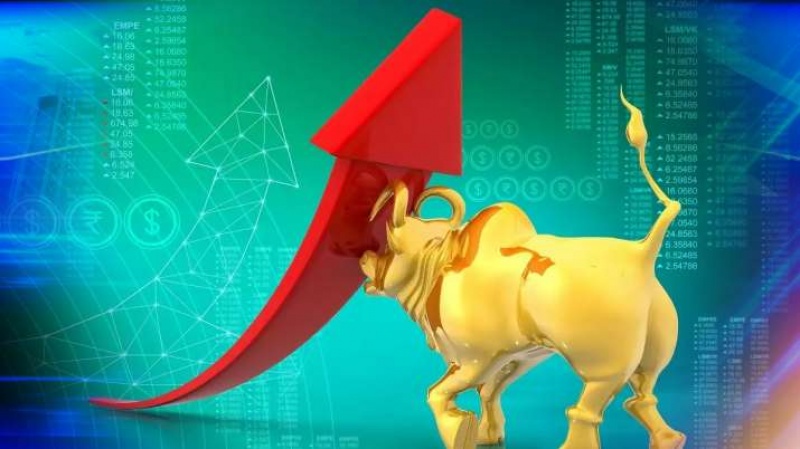Pros and cons of stock buying with Sensex at 50,000
What drives the current momentum? With Joe Biden taking over as the 46th President of the United States, he is expected to find more liquidity in ways to stimu
- by B2B Desk 2021-01-22 07:43:25
The BSE Sensex rose above the 50,000 mark on Thursday before falling in the last hour of trading. This achievement gave rise to two extreme views: markets have risen extremely exponentially; They will continue to be the factors that drive markets higher.
What drives the current momentum?
With Joe Biden taking over as the 46th President of the United States, he is expected to find more liquidity in ways to stimulate his path to the equity markets. Investors are increasingly betting on higher US government spending to boost its economy. Vaccination programs across the country will also increase optimism about the global economic recovery. Another factor that played an important role in this increase is the system of extremely low interest rates worldwide. Emerging markets have received more investor interest than developed markets in recent months due to the weak dollar.

How are the returns on peak purchases?
JP Morgan analysts pointed out in a study that investing in the market when it has reached record levels could be a good strategy to get good returns. It turns out that Sensex's buy strategy when it reached the early stages and held the position has generated good returns of around 15% in some cases; The worst case scenario is a 7.2% annual return for those who bought the index when it hit the 20,000 mark in December 2007. But the one-year returns have fluctuated, as shown in the chart next to the supply. . Clearly, those considering buying at current levels need a long-term view.
What are the risks of investing in times like these?
Some of the market experts are concerned about the high valuations of India. The MSCI India Index is trading at a 30x one-year PE price. Given that this rally is driven by liquidity, less than expected stimulus or a reversal in the harmonic stance of central banks could be discouraging. A faster-than-expected rise in inflation could also be a negative surprise.
What are the disadvantages of such an increase in the market?
As is customary during any liquidity-driven rally, many retail investors gravitate toward mid- and small-cap stocks and small-cap stocks. The main characteristic of these stocks is that they can generate high returns in a short period of time, but they also carry very high risks. When the market trend is reversed, these stocks are at risk of a severe recession, and investors often have a hard time exiting these positions. As the chart shows, betting on a diversified large-cap portfolio can yield long-term returns, but buying small-cap in this frenzy is a recipe for trouble.
Are earnings on par with the market?
As the index rises to new highs and valuations are expensive, the key question is whether corporate earnings are catching up. After all, valuations are a function of performance, and unless significant improvements are made to earnings estimates, returns on equity will be frozen. While there are early signs of a good recovery from the pandemic, some analysts are concerned this is due to stifled demand and the depletion of household savings. They say more support is needed from the center to drive the demand for recovery to sustain it.
Also Read: 10 Safe Businesses in 2021-Business2Business

POPULAR POSTS
Loan EMIs to Drop as RBI Slashes Repo Rate - Full MPC December 2025 Highlights
by Shan, 2025-12-05 11:49:44
Zoho Mail vs Gmail (2025): Which Email Platform Is Best for Businesses, Startups, and Students?
by Shan, 2025-10-09 12:17:26
PM Modi Launches GST Bachat Utsav: Lower Taxes, More Savings for Every Indian Household
by Shan, 2025-09-24 12:20:59
$100K H-1B Visa Fee Explained: Trump’s New Rule, Clarifications & Impact on Indian Tech Workers
by Shan, 2025-09-22 10:11:03
India-US Trade Deal Soon? Chief US Negotiator Arrives in Delhi as Talks Set to Begin Tomorrow
by Shan, 2025-09-15 11:54:28
Modi Meets Xi: Trump’s Tariffs, Strategic Autonomy, and the Future of Asia’s Power Balance
by Shan, 2025-09-03 06:40:06
Google Claims Gemini AI Uses Just ‘Five Drops of Water’ Per Prompt, Sparks Debate
by Shan, 2025-08-22 12:34:27
RECENTLY PUBLISHED

Pine Labs IPO 2025: Listing Date, Grey Market Premium, and Expert Outlook
- by Shan, 2025-11-05 09:57:07

The Agentic Revolution: Why Salesforce Is Betting Its Future on AI Agents
- by Shan, 2025-11-05 10:29:23

Top 10 Insurance Companies in India 2026: Life, Health, and General Insurance Leaders Explained
- by Shan, 2025-10-30 10:06:42

OpenAI Offers ChatGPT Go Free in India: What’s Behind This Big AI Giveaway?
- by Shan, 2025-10-28 12:19:11

Best Silver Investment Platforms for 2025: From CFDs to Digital Vaults Explained
- by Shan, 2025-10-23 12:22:46





 Subscribe now
Subscribe now 